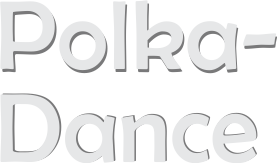
Industrial development during the 19th century brought about influential changes in the societal structure which majorly affected the world of dance. Initially, couple dances were regarded as scandalous due to the close proximity between a man and a woman as well as because of the exhilaration of constant spinning. However, with the advent of the Polka Dance, couple dances permitted people to take the floor simultaneously. A Central European dance, Polka is a popular dance music originated in Bohemia and familiar throughout Europe and America. Local varieties of Polka can be found in the Nordic countries, United Kingdom, France, Ireland, Latin America and the United States. Characterized by three quick steps and a hop, it is danced to a music in 2/4 time. The dance extraordinarily swept the ballrooms in Paris, across Europe and the Americas developing in many varieties. Out of all the dances that originated during the 19th century, Polka is the only dance that survived.
The complexity of understanding the origin of Polka dance is fairly high as both the Czechs and the Poles believed that it originated in each other’s homeland. The New Grove Dictionary of Music and Musicians states that the Polka dance originated in the Czech Republic (formerly known as Bohemia) in around 1830 as a round–couple dance and quickly spread into Prague and the rest of the Eastern Europe in the early 1800s. Referring to the rapid shift from one foot to the other, the name ‘Polka’ is derived from the Czech word for ‘field’ or ‘half–step’. However, there is another interpretation that relates the name to the Czech term ‘polska’ for a ‘polish woman’. Also, based on the flavour of the local people, Polka has regional variations such as Rheinlander, Polkamazurka and the polish Polka.
Polka dance is performed in pairs which is either a face–to–face waltz position or by standing side–by–side. The man puts his arm around the woman’s waist and she puts her hand on his shoulder. The Polka has one characteristic feature, that is, the half–step or hop that precedes the first step. This feature, however, is reduced or is omitted by many dancers. The dance begins with standing on your right foot and giving a hop on it and further stepping forward on to the left foot. The dancer then closes the right foot over the left taking the weight on the right foot and then again step on the left foot. The dancer holds for a beat, thereby keeping weight on the left foot. These steps are further repeated.
During its advent, the tempo of Polka was similar to that of the military march that played about 52 bars per minute. The music then, was usually in a ternary form with eight–bar sections along with a brief introduction and coda. Musical instruments vary for Polka dance depending on the band and the song. Its traditional musical instruments include trumpets, clarinets, trombones and tubas. Accordions, electric basses, guitars and percussion are the common contemporary instruments used today. Polka song has a standard beat of 2/4 and is structured in around four verses along with a chorus. Most of the Polka songs are about loss, love and food.
The 19thcentury polka dances presented an articulated higher social standing of the polka dancers. Girls were pictured wearing elegant evening gowns, each of which has a different pastel colour matched by flowers in their hair while the boys decked out in white shirts, black coat–tails and bow ties. The folklore of the Rzeszow area of south–eastern Poland has numerous varieties of Polka whose costume include blue outfits with red wool buttons and trimmings for men along with high boots and white shirts. Women, on the other hand, wear colourful skirts with white aprons, white scarves wrapped around the heads, tight dark vests that contrasts the trimmings and embroidery and coral beads.
Few contemporary styles of Polka dance include:
- Polish–style Polka: Found in the United States, it is a North American style and has two sub–styles in Chicago namely, the ‘Chicago honky’ which uses clarinet and a trumpet and the ‘Chicago push’ that features accordion, Chemnitzer and Star concertinas, upright bass or bass guitar and two trumpets.
- Slovenian–style Polka: Another North American style Polka, it features piano accordion, chromatic accordion and diatonic button box accordion.
- Dutchmen–style Polka: With roots in the American mid-west, it features an oom–pah sound with a tuba and banjo.
- Conjunto–style Polka: They are also called as the ‘Norteno’ and have roots in northern Mexico and Texas.


